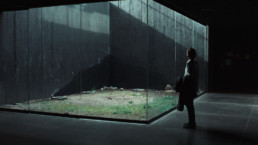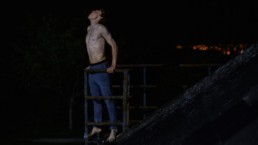Sundance: Celebrating 'The Janes,' Who Gave Abortions to Those in Need
There were a few common storylines that ran throughout the Sundance Film Festival this year. Eco-consciousness and Black trauma in White America were a couple of notable standouts. Another undeniably sensitive topic that connected a handful of films (like Happening and Call Jane) is abortion–or more specifically, highlighting a woman's right to choose. Recent political and public debate over this subject only increased the timeliness of Emma Pildes and Tia Lessin's historical documentary, The Janes.
The opening sequence of the film plays like a standard talking heads interview setup. Notably, though, it's missing the score. With no music to aid in relieving tension, we're left to ingest all of the horrifying statistics and personal anecdotes that are boldly shared by a handful of brave women. The decision to not include any music during this scene makes a huge impact on the story and prepares us for the psychological and emotional hardship that is to come.
The rest of The Janes follows a pretty familiar documentary structure, strewn with facts and personal asides. In the 1960s, abortion wasn't part of standard medical practice. Abortion was a crime. Young women literally had to turn to the mob to get an illegal abortion in dingy motel rooms, left to bleed and care for themselves post-operation. Some women were assaulted by rogue male doctors AFTER they got their abortion, but couldn't say anything to authorities because the procedure was illegal in the first place. And for those who claim that protection would solve the problem, women in the film recall that law at the time that you had to be married to get access to birth control (a bit counterintuitive if you ask me). Some women found a workaround by buying fake rings to get contraceptives for themselves.
Those are only a few of the many horrifying tales discussed in The Janes. The heaviness of the past (and horror that history could repeat itself) is slightly relieved as we learn more about the women behind "Jane" and the impact they've had on so many young women's lives. JANE is the anonymous pseudonym for the Chicago-based underground network of women who provided safe abortions for people in need. They were both an unlicensed medical facility and a support group for women with nowhere else to turn. Their heroism and bravery in the face of total injustice are admirable, to say the least.
In a stunning mix of archival and present-day footage, co-directors Emma Pildes and Tia Lessin craft a powerful portrait of strength and resilience. It's incredible–in both the positive and negative sense–that over 50 years later, we're still having the conversation around a woman's body and her right to choose. However, The Janes is another step in the long-treaded journey towards progress and activism.
1 hour 41 minutes.
'Belle' Mixes Beauty and The Beast with the Metaverse
When Mark Zuckerberg recently announced Facebook's plans of creating a virtual reality – "The Metaverse" – to the world, I immediately thought of the online virtual parties that I "attended" during last year's Sundance Film Festival. My user-created avatar mingled with other online avatars "at the bar" and "on the dance floor," but in reality, I was simply navigating my character from the comfort of my couch.
I thought to myself, "This future is kind of a bummer." But as the new movie Belle shows, maybe I just wasn't in the "right" virtual reality.
In this new mesmerizing animated film, Academy Award-nominated director Mamoru Hosoda shows us that not all virtual societies are awkward fantasy lands. Distributed by legendary Anime production company GKids, Belle is a cautionary tale about the joys and dangers that can be experienced as we all continue to grow up using immersive social media.
Painfully shy schoolgirl Suzu is the embodiment of adolescent insecurity. Having lost her mother as a child, she has always struggled to live a fully secure life. That changes when she downloads the app "U," a fully immersive virtual society that boasts over 5 billion users. Through "U's" advanced technology, Suzu's hidden strengths in the real world are used to create her online avatar. And so, she gets the confidence that she so desperately lacks in the real world to excel in an alternate, online one.
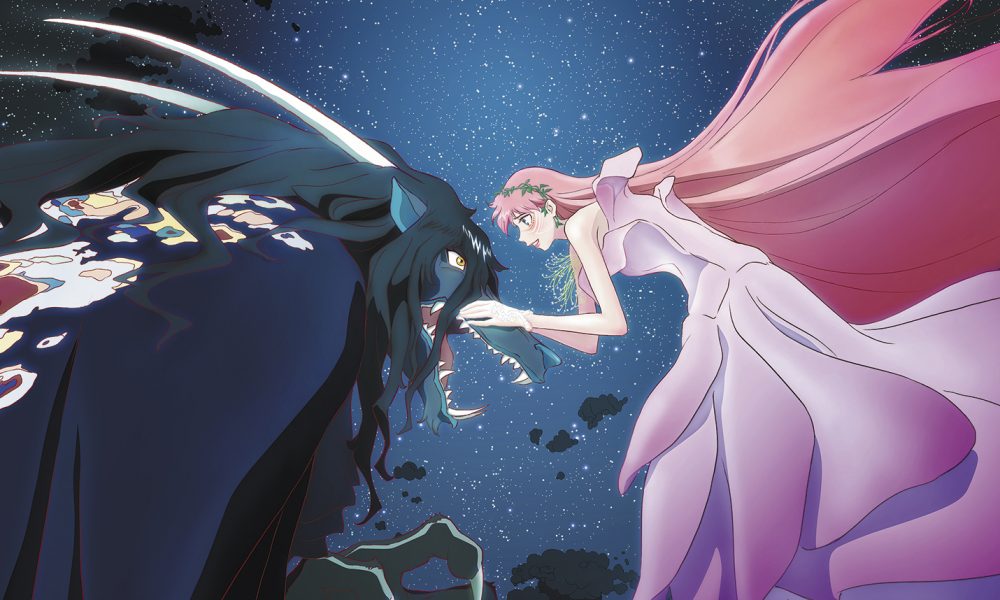
She creates the avatar "Belle": a beautiful, fairy-esque woman with cotton candy hair and the voice of an angel. As Belle, Suzu dazzles everyone with her charm and talent. She makes the other avatars feel good about themselves, and in turn, she begins appreciating and embracing her individuality within the metaverse.
Her connection gets disrupted when a cyberbully known as "The Beast" begins trolling the other avatars and threatening her safety online. Determined to restore peace within "U," Belle takes it upon herself to uncover the identity behind the Beast, hoping that by knowing that while second chances are hard to come by in reality, everyone can start over in "U."
If you're thinking this sounds like a hybrid of Beauty and the Beast meets The Matrix, you're not wrong. Belle is a young woman in distress who is trying to comfort an unruly Beast, only to realize that it's his pain that is masquerading as strength. And he's not truly a horrible person after all.
Despite being an animated film, Belle is not necessarily a children's movie. Director Mamoru Hosoda takes familiar childhood themes of bullying, friendship, and forgiveness and presents them through the lens of future-facing technology which feels like an optimistic, albeit slightly naive, view of the upcoming digital trends.
Having sat through the film completely enthralled with the complexity and beauty of this make believe virtual reality, I'm more open to giving avatar parties another chance. And with the news that this year's Sundance Film Festival is going completely virtual this year, I may just have my chance.
Belle is in select IMAX theaters starting Wednesday, January 12, ahead of its nationwide theatrical release on Friday, January 14.
'The Scary of Sixty-First': Conspiracies and Spiritual Torture
It's hard to decipher whether or not writer/director Dasha Nekrasova's debut feature The Scary of Sixty-First is fetishizing the rabbit hole littered with conspiracy theorists and Q Anon stans or if it's ironically holding a mirror up to their insanity and shouting 'See, look how crazy you're acting!'. In either case, Nekrasova's done her job. Nekrasova, alongside co-writer Madeline Quinn, abrasively shoves the red pill down our throats and draws us into a reality where spiritually tortured women are given a voice, and a body, to express their most repressed and traumatic secrets.
Distributed by cult favorite Utopia, known for its support of boundary-pushing indie films, The Scary of Sixty-First tells the story of two young women, Noelle (Madeline Quinn) and Addie (Betsey Brown), who find their dream apartment: a beautiful walkup in Manhattan. However, their sighs of relief are quickly met with caution; a dead rodent in the fridge, a mirror hung on the ceiling in one of the bedrooms, and a mysterious tarot card in the bathroom all feel like bad omens to the new roommates. But none of that compares to the graphic and sexual night terrors Addie experiences on that first night. Something is very wrong here.
Soon after Addie's phantom spell, a mysterious girl shows up at their apartment. The girl (Nekrasova) claims to be an independent investigator who demands entry into the apartment to look for clues left by the previous tenant: Jeffrey Epstein.
"Something extremely sinister happened in this apartment," says the girl to Addie. "In your room." Noelle takes the bait and joins the girl in frantically trying to uncover the mystery of the apartment. They turn into amateur internet sleuths as they mull over publicly available Epstein evidence, do a virtual deep dive into his "pedo island," and uncover the fact that the apartment used to be orgy flophouse. Addie, meanwhile, continues to be controlled by supernatural occurrences. The further the girls go down the rabbit hole of bizarre theories and developing romantic connections, the more unhinged Addie becomes. "The important thing is we are awake," says the girl. But we are left to wonder, is this nightmare we are living in real life, or just a bad dream?
The Scary of Sixty-First is not the most polished film, or even that scary - as its title would suggest - but what it does so well is bathe you in uncertainty and doubt. It's a psychological gnawing of the mind that is politically and socially provocative, which is to be expected for a film that calls itself an homage to Stanley Kubrick’s Eyes Wide Shut. Shot in 16mm film by cinematographer Hunter Zimny and set to a score by Uncut Gems contributor Eli Keszler, The Scary of Sixty-First is a deadpan delivery thesis statement on the disturbing subculture of conspiracy theorists and the tangled webs they leave behind.
Distributed by Utopia. The Scary of Sixty-First is now playing in select theaters and VOD.
'Memoria' is an Ambient Adventure Through the Senses
Palme D’or winning Thai director Apichatpong Weerasethakul is a master of his craft. Paying attention to the finest of details and the most delicate of sounds, his films all share a common thread of acute sensory exploration. His canon is that of a true auteur.
That said, it's not surprising that his latest feature, Memoria, is a continuation of this legacy.
Tilda Swinton stars as Jessica, a Scottish orchid farmer who has taken up residence in Bogota, near the jungles of Columbia, to be close to her ill sister. Early one morning, Jessica hears a thunderous 'bang' that sends chills down her spine, due to its unexpected occurrence and the strange metallic vibrato the sound omits. Unable to locate the source of the noise, Jessica begins experiencing a mysterious sensory syndrome as she attempts to locate and quiet the growing sonic sensation in her head.
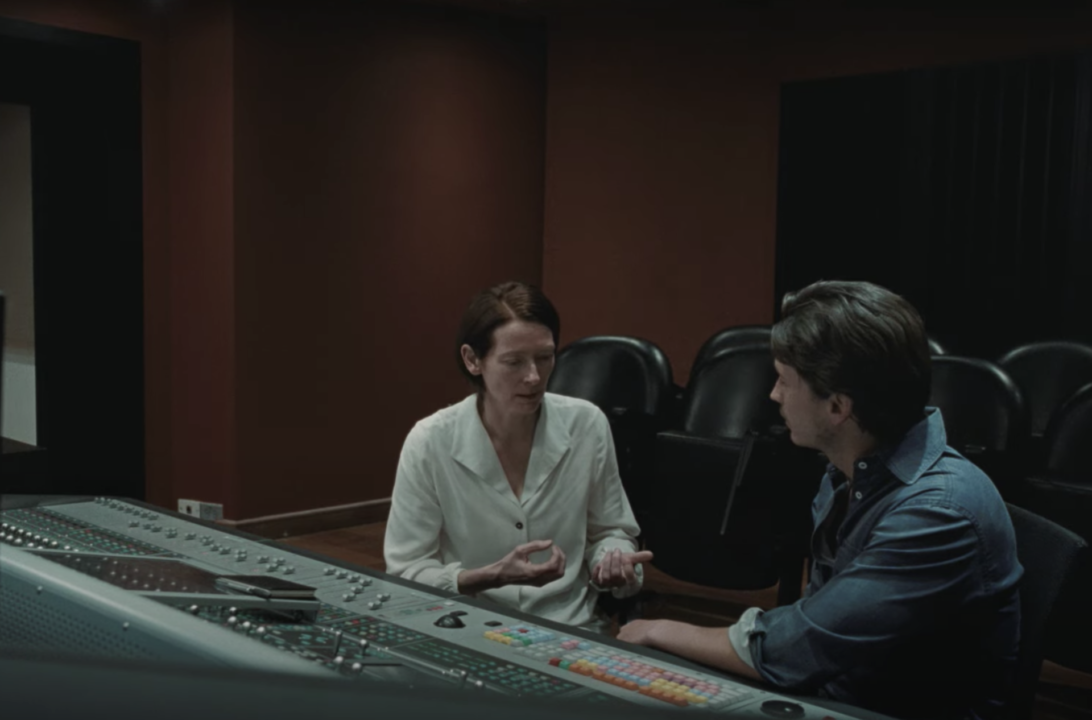
Winner of the Grand Jury prize at the 2021 Cannes Film Festival, Memoria is Weerasethakul's first dive into English-language filmmaking; the only deviant from his otherwise stereotypical "slow cinema" outputs. Tilda Swinton commands attention from the very first frame; her performance amongst the small cast of nine billable characters is transfixing, to be expected. Her co-stars include a French archaeologist and a young studio producer, both of whom hold steady in their respective scenes that, at times, can last over 10 minutes straight.
Those familiar with Weerasethakul's filmography know that the art-house filmmaker is not the most consumer-friendly, so a succinct plot (and dare I say, payoff) is not easily identifiable. Memoria gives plenty to ruminate on throughout the course of its 2-hour runtime, making way for a deep, open-ended conversation with peers post-screening. Also worth discussing: the film's 35 co-producers!
I can't end my review without talking about the music of Memoria. Colombian composer César López's serene score is the perfect companion to this otherwise quiet film. Listen to the title track "Memoria" for a sense of the ethereal goodness.
Distributed by NEON. Memoria opens at the IFC Center in New York on 12/26 before "moving from city to city, theater to theater, week by week, playing in front of only one solitary audience at any given time.” Per NEON, the film will only play in theaters, and it will not become available on DVD, on-demand, or streaming platforms.
'The Novice' is a Rowing Drama That Strives For Perfection
Winner of Best U.S. Narrative Feature Film at this year’s Tribeca Film Festival, The Novice is a college drama that shows the dark side of striving for perfection. Picture the adrenaline-inducing anxiety of Whiplash combined with the relentless nature of Black Swan and you'll find The Novice fits squarely in the middle of these hyper-intense character studies.
The Novice follows Alex Dall (Isabelle Fuhrman - Best Actress winner at Tribeca Film Festival), a queer female collegiate rower whose struggle with being a perfectionist goes from being a positive attribute to a cry for help. Over the course of a few months, her dangerously obsessive pursuit to attain straight A's and stand out on her school's crew team affects her mental health, physical health, and relationships with peers and love interests alike. Alex doesn't care who she offends on the way up, as long as she moves up.
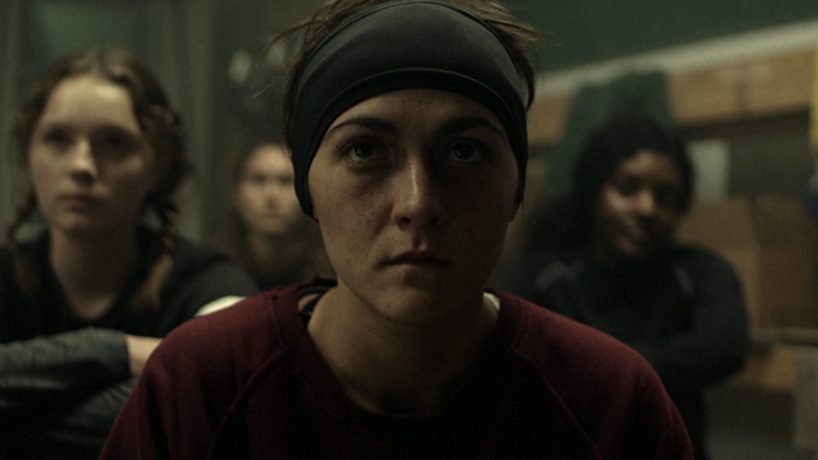
The film is nontraditional in its editing style with quick cuts and fast-paced shooting, seemingly reminiscent of how I'd image Alex's mind to be: racing constantly. Its eerie nature and gloomy aesthetic hums with desire, doubt, and secrets.
The Novice is Lauren Hadaway's directorial debut, but the former competitive rower didn't need years of filmmaking experience to successfully bring the rarely-seen portrayal of women's crew to the big screen. What's even more impressive are the dual storylines that are equally fraught with increasing psychosis. Not only is Alex developing gnarly open wounds on her palms from the incessant rowing, she is also stumbling through a relationship with her Physics teacher's assistant, Dani (Dilone).
Set to a rich score by Alex Weston, The Novice is a cautionary tale about what happens when we push our human potential too far. For Alex, "quitting" is the most offensive word and "relaxing" should be viewed as a privilege. Sadly, there are people who subscribe to this way of thinking that, although maybe not as severely as Alex, could alleviate the self-appointed pressure to be perfect. Grit is a great thing when used appropriately, and as writer/director Lauren Hadaway shows us in stark detail, there is such a thing as taking it too far.
This review originally ran on June 24, 2021, during the Tribeca Film Festival.
Distributed by IFC Films, The Novice opens in theaters this Friday, 12/17.
'Project Space 13' is Performance Art During Covid Panic
If you feel like reliving a not-so-distant nightmare, queue up writer/director Michael Bilandic's fascinatingly bizarre feature, Project Space 13. This suffocating satire offers a trippy look at how a performance artist and two security guards spend a night in SoHo at the height of the 2020 Covid apocalypse.
Nate (Keith Poulson) is an amateur performance artist in NYC who finally gets his big break when he's invited by Pieter (Jason Grisell) to take up residency at his high-scale Manhattan art gallery. Nate's provocative and jarring piece includes self-isolation in a prison-like cage, relying on a dominant robot accomplice for food (fried bugs), relief (excrement supplies), and torture (electrical shocks). However, as luck would have it, the city shuts down on night one of his three-month show. But Nate is stubborn and refuses to quit, so the galley hires a security guard duo (Hunter Zimny and Theodore Bouloukos) to watch over the space and Nate. As the city turns more chaotic by the minute and deranged, desperate civilians begin to threaten their safety, the three men start preparing for the worst – spilling their darkest secrets in the process.
Project Space 13 has a Marina Abramović meets Dash Snow vibe that makes for an intentionally uneasy watch. Bilandic's daft protagonist, embodied by Keith Poulson, is a self-righteous artist who claims to dwell at the center of art & technology. His stance is admirable, even sympathetic, but his method of getting his point across via provocative performance art while the city plunges into chaos around him is charmingly naive.
Cinematographer Sean Price Williams, best known for his work on the Safdie brothers' Good Time, lends his artfully chaotic eye to this micro-indie feature, giving the film an unsteadiness that perfectly encapsulates how we all felt during the height of the Covid confusion. Further pushing the film into the arthouse column is the original score by "Cult Film Composer" Paul Grimstad (Heaven Knows What, Jobe'z World). I'm still trying to shake the sounds of a baby's cry set against a sporadic drum line beat from the opening sequence. And trust me, the end title credit remix is a jam worth waiting for.
Project Space 13 is streaming exclusively on MUBI.
Lorne Balfe Premieres New Track From 'Silent Night'
Grammy-winning composer Lorne Balfe upgrades a classic Christmas carol in the British dark comedy Silent Night, and we've got the exclusive.
Silent Night, starring Keira Knightley and directed by Camille Griffin, follows parents Nell (Knightley) and Simon (Matthew Goode) as they invite their closest friends to join their family for Christmas dinner at their idyllic home in the English countryside. As the group comes together, it feels like old times. But behind all of the laughter and merriment, something is not quite right. The world outside is facing impending doom, and no amount of gifts, games, or Prosecco can make mankind’s imminent destruction go away.
A choir of voices sings the familiar titular hymn, but their proclamation that "all is calm, all is bright" feels anything but cheery. Rapturous orchestration builds throughout the piece until it reaches a moment of calm, which is where the strong soloists take over and ease the suspense.
Cinemacy is thrilled to premiere the first track from Silent Night, "All Is Calm,” before its release on Friday, December 10th. Click here to pre-save the soundtrack now.
"Musically, we sought to think big," says Balfe, who brings his years of expertise and extraordinary talent to Camille Griffin's feature-length directorial debut. "We filled the silence with a full orchestra, Bulgarian and Viennese choirs, incredible soloists, and the Christmas powerhouse that is Michael Buble who helps sell the film's dystopian reality by bridging our worlds with easily recognizable nostalgia.”
Originally from Inverness, Scotland, Balfe was destined to be a composer. At 8 years old, he wrote and sold “jingles” for advertisements, and at 13, he auditioned to be a percussionist with the Edinburgh Symphony Orchestra (he secured a spot, of course, and became their youngest member). Balfe's drive and passion led him to pursue a career as a film composer in the U.S., where he continues to leave lasting impressions in the industry. His critical acclaim extends far and wide, having worked on compositions for the Mission Impossible franchise, Black Widow, The Lego Batman Movie, and the Oscar-nominated The Florida Project.
Distributed by AMC+ and RLJE Films, 'Silent Night' is now playing in theaters and streaming exclusively on AMC+. The OST will be released by Lakeshore Records on Friday, December 10.
In 'Wolf,' George MacKay and Lily-Rose Depp Embrace Their Animal Sides
I love my family's pug, Papacito. His rolls of back fat, droopy lips, and sensational snoring are what make him (and all pugs, really) so lovable. The thought of being a pug though is absolutely horrifying.
For some people, this is more than just a humorous "what if." Clinical lycanthropy is a real mental disorder in which a person believes that they were born into the wrong body and are, in their truest form, a nonhuman animal. These delusions are not new either. The first major case dates back to the 1850s when a man truly believed he was a werewolf. This fascinating taboo of "species dysphoria" is the basis of Nathalie Biancheri's high concept arthouse film Wolf.
George MacKay (1917) plays Jacob, a quiet young man who enters a facility that claims to cure a very specific psychosis: species dysphoria, or his belief that he is a wolf. Having gotten in trouble for acting on his animalistic instincts, Jacob and his fellow animal peers undergo intense and often graphic treatments at the hands of a man called The Zookeeper (Paddy Considine).
During his time at the clinic, Jacob befriends a Panda (Karise Yansen), steers clear of the Parrott (Lola Petticrew), is followed by the German Shepard (Fionn O'Shea), and unexpectedly, falls in love with the Wildcat, played by Lily-Rose Depp (The King). Her feline features compliment Jacob's canine characteristics, and the two are quick to fall in puppy love. However, Jacob soon realizes that he is faced with a life-changing decision: can he deny his "true self" for true love?
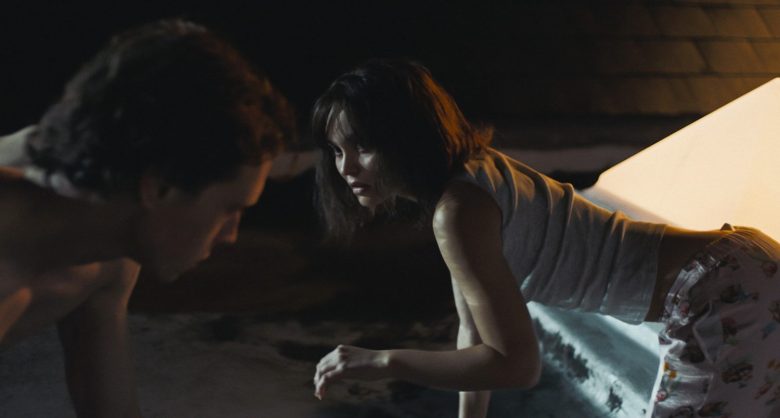
It's easy to quickly draw comparisons to Yorgos Lanthimos' The Lobster (in my opinion one of the best movies ever made). But the similarities stop short of being a carbon copy of the Greek weird wave output. Wolf is a gritty juxtaposition between the beauty and complexity of staying true to oneself.
Despite the humorous thought of actors crawling on the floor and howling like animals for the majority of the film, Wolf is definitely not a comedy. The Zookeeper forces a young man who thinks he's a Squirrel to climb up a tree using his fingernails which, as one could assume, ends in excruciating pain. He also pressures the girl who believes she's a Parrot to jump from the window of their building, claiming that if she's a real bird, she will be fine in her ascension.
Psychological torture and manipulation run rampant throughout the film, further illustrating that the idea of conversion therapy treatment centers are often fraught with abuse and power struggles. Further supporting the dark nature of the film is the primal score by Polish composer Stefan Wesolowsky, whose use of cellos, old synthesizers, flute, contrabass saxophone, and more create an edgy, untamed vibe.
George MacKay is the true star here, fully committing physically and emotionally to the role. His ability to stabilize and strengthen every scene he's in is a true talent, and he shines the brightest on screen.
Giving the audience much to ponder post-watch, Wolf is a high concept, humble production that, at its core, is a film that celebrates the beauty of individuality.
Distributed by Focus Features. 'Wolf' opens in theaters this Friday.




